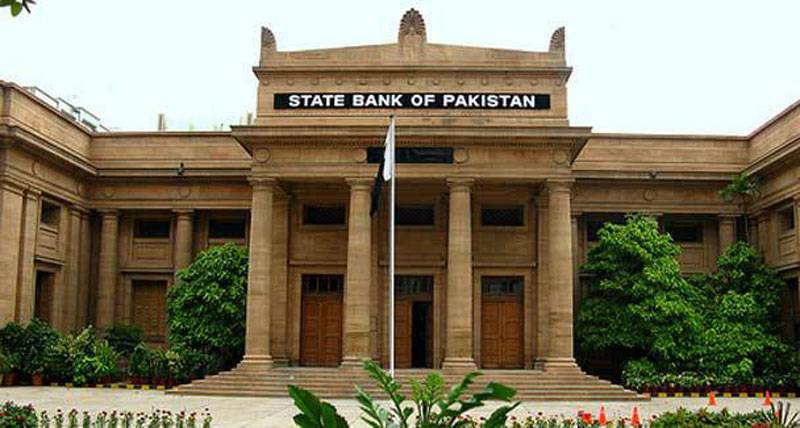KARACHI - FY14 was a better year for the macro-economy, said the State Bank’s annual report on the state of the economy for the year 2013-14, which was released Wednesday.
According to the report, the most notable developments were the tangible improvement in the country’s foreign exchange reserves, the unprecedented appreciation of the rupee in early-March, the reduction in the fiscal deficit, the lower than expected inflation rate, the improvement in private sector credit and the relatively contained current account deficit.
“With the start of a new IMF programme, external inflows from other international financial institutions (IFIs) also began after a gap of almost three years,” the report observed. This helped stem the gradual depletion of SBP’s foreign exchange reserves. Moreover, the $1.5 billion inflow into Pakistan Development Fund (PDF) in February/March 2014, contributed in releasing the pent up inflows, which helped in stabilizing the rupee. The positive sentiments this generated, also instilled a view that the government was finally gearing up for a growth phase.
The SBP views the fiscal deficit at 5.5 percent of GDP was significantly lower than the FY14 target of 6.5 percent and when compared to trends in the past three years. In our view, said the Report, there was a concerted effort on the part of the government to contain expenditures and generate additional revenues, but the one-off factors like the inflow into the PDF and the government delay in paying off the circular debt in FY14 also played their role. Furthermore, the SBP views the public sector enterprises (PSEs) continue to be a fiscal burden on the federal government.
According to the report, although inflation increased marginally in FY14 to 8.6 per cent, it was significantly milder than SBP’s initial projections, due to several factors. First, global oil prices softened much more than expected. Second, although the weakness of the PKR in the first quarter had been anticipated, the subsequent appreciation and stabilization after March 2014 meant the overall weakness of the currency was much lower than projected. Third, the above target mobilization from the Eurobond and the successful divesture of UBL shares, coupled with a smaller underlying fiscal gap, sharply reduced government borrowing from the banking system (especially SBP). Fourth, the increase in electricity and gas tariff were smaller than initially expected. And finally, the primary source of inflation in Q1-FY14 (perishable food items), had subsided by December 2013.
The report observed that as part of the stabilization program to reduce the twin deficits (fiscal and external), the easing monetary policy stance that started in mid-2011, was changed in September 2013. After two consecutive 50 bps increases, SBP held its benchmark rate for the remaining part of FY14. Although the market’s inflation outlook had eased significantly by early 2014, SBP opted to pursue a cautious monetary policy driven by concerns about the external sector, and possible pressure on the PKR.
“This policy stance appears to be vindicated, as it managed to curb M2 growth to 12.5 percent (against 15.9 percent growth in FY13) and yet was able to support a significant increase in private sector credit growth last seen in FY08,’ says the Report. From the supply side, lower government borrowing from the banking system and healthy growth in deposits, created the space for commercial banks to lend productively; from the demand side, the optimism after the general elections in May 2013, created a conducive environment to borrow.
The key message in the external sector, as reported by the SBP, is that while the overall size of the external gap was manageable in FY14, financing it was quite challenging. At the start of the fiscal year, SBP’s foreign exchange reserves were consistently falling, not just because of the monthly current account deficits in the first quarter, but also because of significant IMF repayments that persisted till November 2013. “In the bigger picture, the stand out performer in the external sector were expatriate Pakistanis,’ the report comments. What is more interesting however, is the fact that while Pakistan’s export revenues have remained almost stagnant since FY10, remittances have continued to grow strongly, said the report. During FY14, the worker remittances were higher by $1.9 billion than last year, exhibiting an increase of 13.8 per cent. The strong growth in remittances partially offset the impact of a rise in trade deficit and other factors on the current account balance.
Friday, April 19, 2024
FY14 a better year for macro-economy: SBP report

Empowering Women: The Vision of Maryam Nawaz Sharif
8:37 PM | April 19, 2024
President Zardari confers Nishan-i-Imtiaz (M) award on Turkish CGS
8:23 PM | April 19, 2024
NA speaker suspends two MNAs for disruptive behavior during presidential address
8:20 PM | April 19, 2024
PM Shehbaz orders accelerating countrywide drive against smuggling
8:19 PM | April 19, 2024
LHC allows PTI to hold rally in NA-119
8:18 PM | April 19, 2024
A Tense Neighbourhood
April 19, 2024
Dubai Underwater
April 19, 2024
X Debate Continues
April 19, 2024
Hepatitis Challenge
April 18, 2024
IMF Predictions
April 18, 2024
Kite tragedy
April 19, 2024
Discipline dilemma
April 19, 2024
Urgent plea
April 19, 2024
Justice denied
April 18, 2024
AI dilemmas unveiled
April 18, 2024
ePaper - Nawaiwaqt
Advertisement
Nawaiwaqt Group | Copyright © 2024





